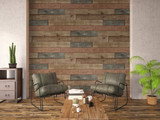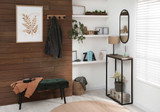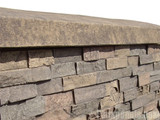
If you’re considering installing new siding on your home, you’ve come to the right place. With so many types of house siding available, it can be overwhelming to know where to start. It’s important that the exterior siding styles you choose align with your budget, your design goals, and the level of upkeep you're willing to maintain—while still giving your home a polished and lasting look.
How to Choose Between the Different Types of Exterior Siding
Replacing your home's exterior is one of the most impactful upgrades you can make. But with so many types of exterior siding out there, how do you choose the right one? Consider the following as you narrow your choices:
- What are your maintenance preferences?
- What’s your project budget (including installation)?
- How easy is the siding to install (DIY or pro required)?
- Can it withstand the climate in your area?
- Are there colors and textures that match your home’s design?
- Will the material resist pests, weather, and UV damage?
This expert guide breaks down 9 of the best exterior siding options, highlighting the pros and cons of each. Whether you’re going for timeless charm, bold statements, or modern simplicity, there’s a siding style that fits your vision.
1. Evolve Stone

Evolve Stone is revolutionizing the way homeowners approach stone veneer siding. As the only mortarless, color-throughout stone veneer product on the market today, Evolve Stone offers unmatched realism and installation convenience. Unlike traditional stone, which often requires a skilled mason, mortar, and heavy tools, Evolve Stone can be installed with just a finish nailer. That means faster install times, reduced labor costs, and a lower learning curve for DIYers.
Its lightweight yet durable construction means it's easy to handle and won’t add structural strain to your home. Even better, the material is moisture-impermeable and UV-resistant, which significantly reduces maintenance concerns.
Available in several realistic profiles and finishes, Evolve Stone effortlessly mimics the texture, color depth, and feel of authentic stone—with none of the hassle. It’s ideal for full-facade applications, accent areas, and gables, and is especially appealing to builders navigating skilled labor shortages.
Important Installation Note: An Evolve Stone rainscreen system is required for all exterior installations.
Pros of Evolve Stone
- Mortarless installation with a finish nailer
- Lightweight, fast to install, and beginner-friendly
- Realistic texture and color throughout the composition
- Moisture-impermeable and UV-resistant
- Durable and long-lasting with minimal maintenance
Cons of Evolve Stone:
- Requires a rainscreen (adds one extra planning step)
- Should not be used around open-hearth fireplaces
2. Faux Stone Siding
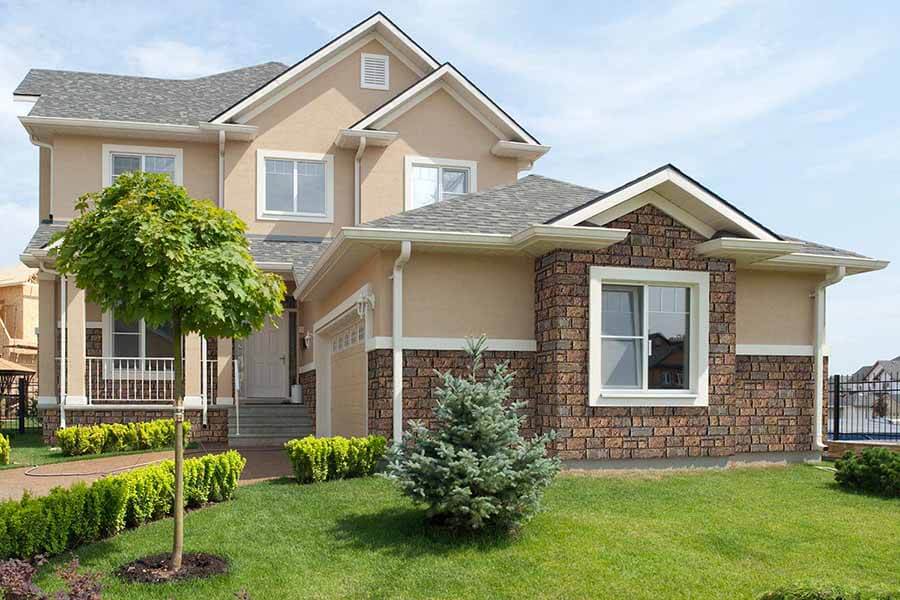
Faux stone panels offer homeowners the chance to achieve the rugged elegance of natural stone without the complexity or price tag. These panels are meticulously molded from real stone and hand-painted to capture the texture, dimension, and subtle color variation of quarried stone. But instead of needing heavy equipment and professional installation, faux stone panels can be applied with screws and construction adhesive, making them extremely DIY-friendly.
Made from high-density polyurethane, these panels are resistant to cracking, chipping, moisture, and pests, and they offer exceptional curb appeal. Whether you're going for rustic charm, river rock tranquility, or modern mountain style, custom-crafted faux stone can get you there with ease.
Important Installation Note: A drainage mat is required for exterior installation.
Pros of Faux Stone Siding Panels:
- Hand-crafted in America by artisans to capture the same look and texture as natural stone
- Lightweight and easy to install
- More affordable than natural stone veneer
- Available in a variety of eye-catching colors
- Resistant to cracking, chipping, and fading in the sun
- Resistant to pests
- Requires little to no maintenance
- Easy to clean with plain water or mild soap
Cons of Faux Stone Siding Panels:
- Not load-bearing
- For open-flame areas, you must follow proper clearances and fire safety guidelines
- Drainage mat required
3. Faux Brick Siding
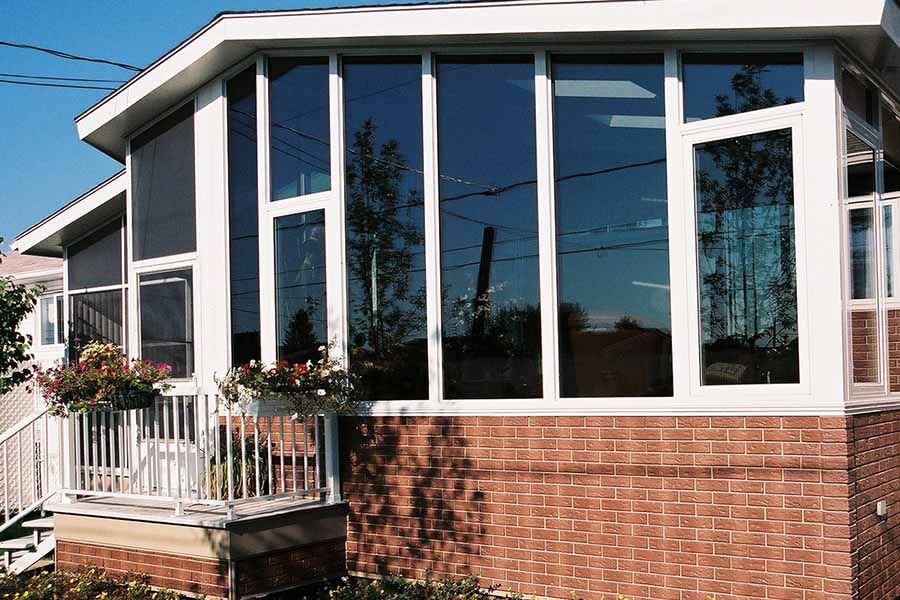
Faux brick siding is the perfect solution for homeowners who love the timeless appeal of traditional brick but want to avoid the costs and limitations that come with masonry. Just like faux stone, faux brick panels and siding from Barron Designs are molded from real brick and feature incredible detail and texture—including the charming irregularities and imperfections that make real brick so beloved. And though they’re not structural, they can still withstand harsh climate conditions.
These panels are available in high-density polyurethane and Novik’s lightweight polypropylene options. They’re also incredibly easy to install, requiring no mortar, no skilled labor, and no heavy tools. Whether you’re going for a vintage farmhouse look, an urban loft vibe, or a bold accent wall, faux brick adds character and visual interest without overwhelming your project timeline or budget.
Pros of Faux Brick Siding Panels:
- Lightweight and easy to install yourself
- More affordable to buy, ship, and install compared to real brick
- Provides the same look and rustic texture as real brick
- Available in a variety of colors that mimic natural brick
- Resistant to cracking, chipping, and fading
- Durable in the face of extreme climate conditions
- Resistant to pests
- Requires little to no maintenance
Cons of Faux Brick Siding Panels:
- Not structural
- May require creative trim work around openings
- Drainage mat required
4. Vinyl Siding
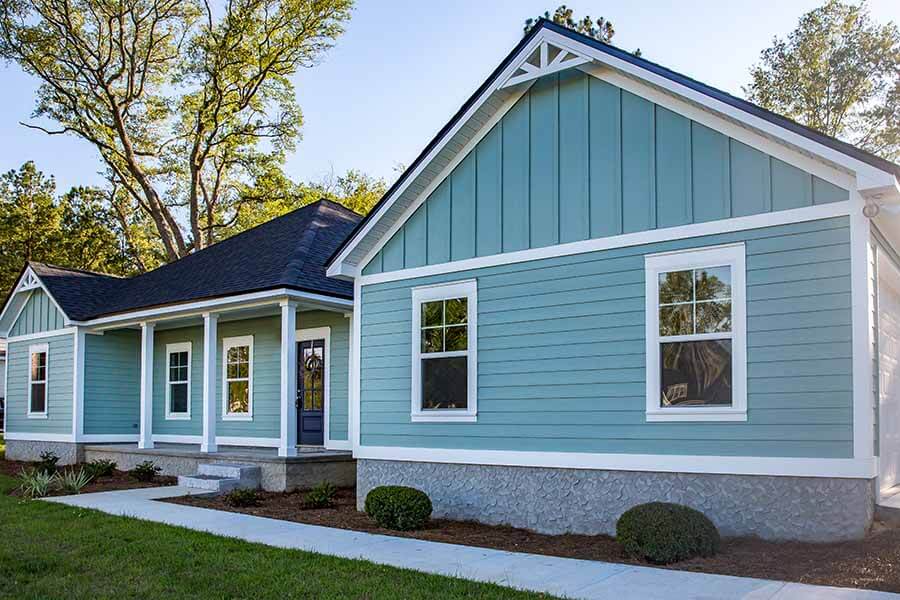
Vinyl siding remains one of the most popular types of house siding due to its affordability and low maintenance requirements. Made from polyvinyl chloride (PVC), vinyl is designed to mimic wood clapboard and is available in a variety of colors, textures, and profiles. It can suit almost any architectural style, from classic colonial to contemporary.
An alternative worth considering is Novik siding panels, which are made from polypropylene and designed to install just like vinyl siding. Novik panels are durable, easy to install and maintain, and offer hyper-realistic stone, brick, and shake siding looks.
Pros of Vinyl Siding:
- Budget-friendly and widely available
- Long-lasting (20–40 years)
- Comes in many color and texture options
- Minimal upkeep required
Cons of Vinyl Siding:
- Can fade or become brittle in extreme conditions
- Can warp or crack under high heat
- More bugs can enter the home where the siding transitions from a brick or stone foundation to vinyl siding. In general, installation perfection is needed to avoid gaps where bugs can get through.
5. Natural Wood and Cedar Shakes
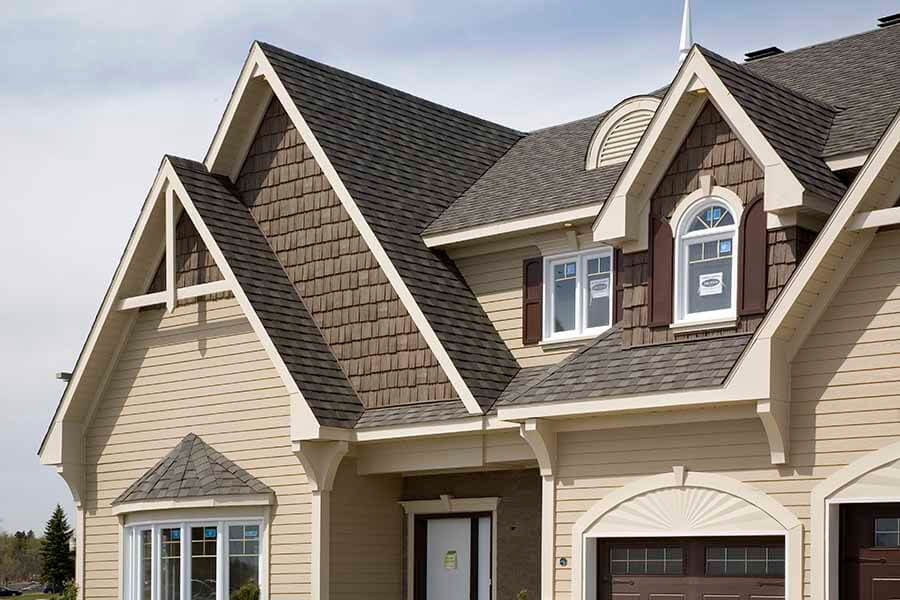
Among all exterior siding styles, natural wood and cedar shakes remain a favorite for their warmth, character, and charm. Shakes and planks can be stained or painted in nearly any color, offering complete design flexibility. However, they require a strong maintenance commitment to stay protected against weather elements and pests.
Pros of Natural Wood Shakes:
- Beautiful and versatile aesthetic
- Can be stained or painted
- Provides excellent insulation when installed properly
Cons of Natural Wood Shakes:
- Needs sealing and periodic refinishing
- Natural variations can make replacement matching tricky
6. Natural Stone Siding
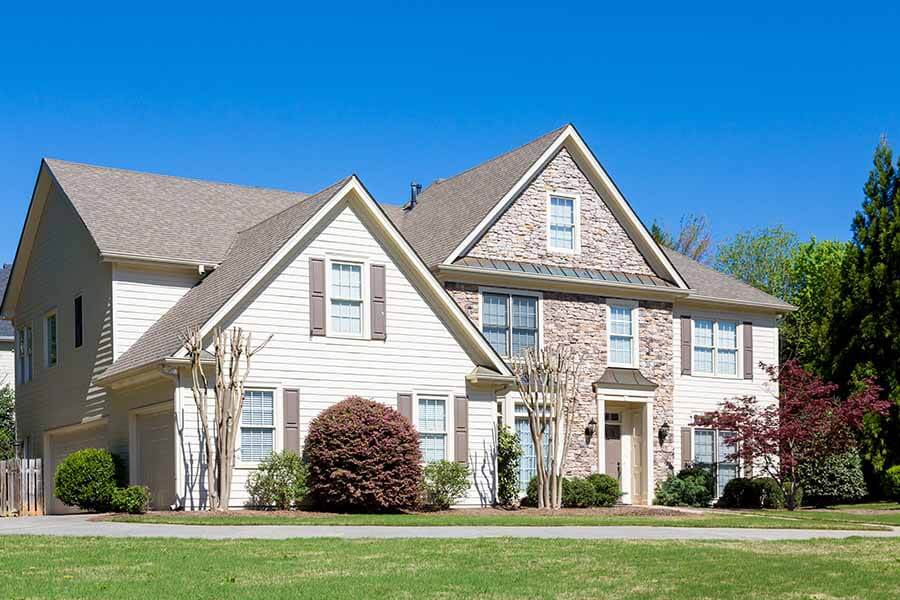
As one of the most premium types of exterior siding, natural stone creates stunning curb appeal with unmatched texture and permanence. From granite to limestone, no two stones are exactly alike, which adds character to the home’s facade. But while it excels in appearance, the installation and material costs attached to natural stone siding are steep.
Pros of Natural Stone Siding:
- Durable and weather-resistant
- Fire-resistant and easy to maintain
- Adds instant luxury and value to a home
Cons of Natural Stone Siding:
- Costly
- Heavy and requires special structural support
- Requires professional masonry work
7. Natural Brick Siding
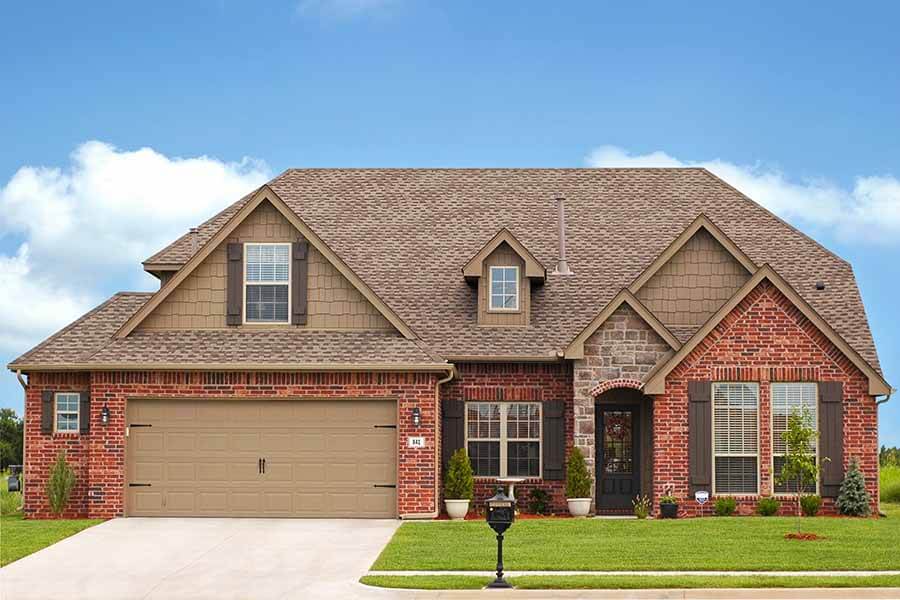
Brick is a timeless choice that has long been associated with sturdiness and tradition. It’s not only fireproof and durable but also generally low-maintenance after installation. While brick may not offer as many color or texture choices as other types of house siding, its lasting appeal makes it a reliable option for homeowners who prefer classic, enduring design.
Pros of Natural Brick Siding:
- Classic appearance with long lifespan
- Fire and pest-resistant
- Helps insulate against extreme temperatures
- Low maintenance overall
Cons of Natural Brick Siding:
- Skilled bricklayer/mason needed for installation
- Costly
- Heavier than other siding types
- Limited flexibility for updates after installation
8. Fiber Cement Siding
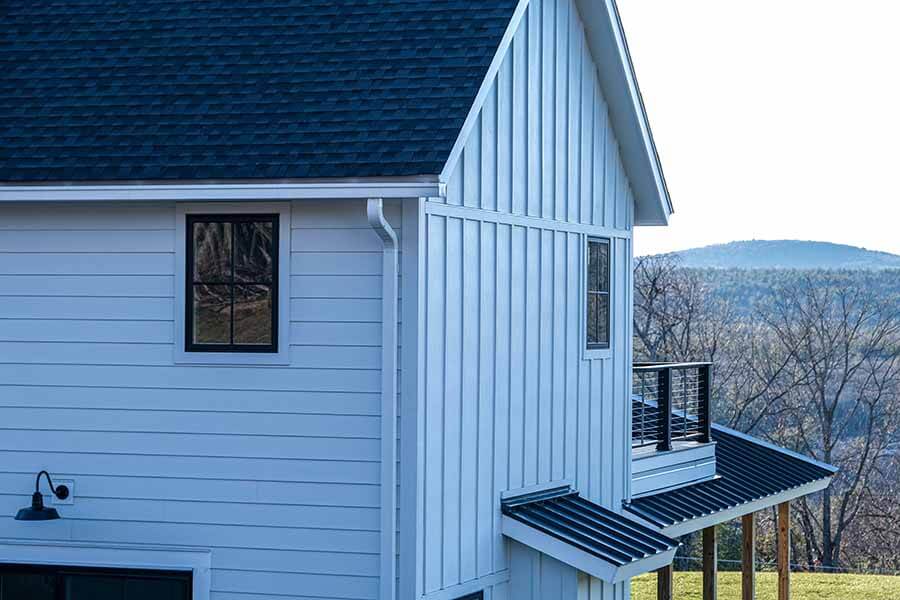
Fiber cement has become one of the fastest-growing exterior siding styles due to its durability and ability to mimic the appearance of wood, stucco, or masonry. Made from cement, sand, and cellulose, it provides great protection against fire, pests, and rot. It can be factory-painted or primed for a custom finish.
Pros of Fiber Cement Siding:
- Resistant to fire, rot, and insects
- Customizable with paint or stain
- Suitable for most climates
Cons of Fiber Cement Siding:
- Requires precise installation techniques
- May require touch-ups or repainting over time
9. Metal Siding (Aluminum or Steel)
Metal siding, particularly aluminum and steel, is gaining popularity among homeowners who want a modern, industrial look with long-term durability. These exterior siding options resist fire, mold, and pests, and they are ideal for extreme climates. However, metal can dent easily and may require touch-ups over time.
Pros of Metal Siding:
- Durable, fire-resistant, and eco-friendly
- Minimal maintenance
- Sleek and contemporary appearance
Cons of Metal Siding:
- May require foam backing for insulation
- More susceptible to surface dents than other materials
Choose From the Best Types of House Siding for Long-Term Value
When exploring the many types of house siding available today, it’s clear that there’s no one-size-fits-all solution. The right fit depends on your home’s style, budget, and how much ongoing maintenance you're prepared to manage. Whether you're drawn to the effortless realism of Evolve Stone, the warmth of faux brick and stone, or prefer other exterior siding styles like vinyl, fiber cement, or metal, the key is finding materials that align with your vision and lifestyle.
At Barron Designs, we offer a wide range of low-maintenance, design-forward exterior siding options that are easy to install and built to last. Ready to plan your project? Start by checking out our guide to measuring for exterior siding so you can order with confidence.
How to Measure For Exterior Siding (A Guide)
Shop Related Products